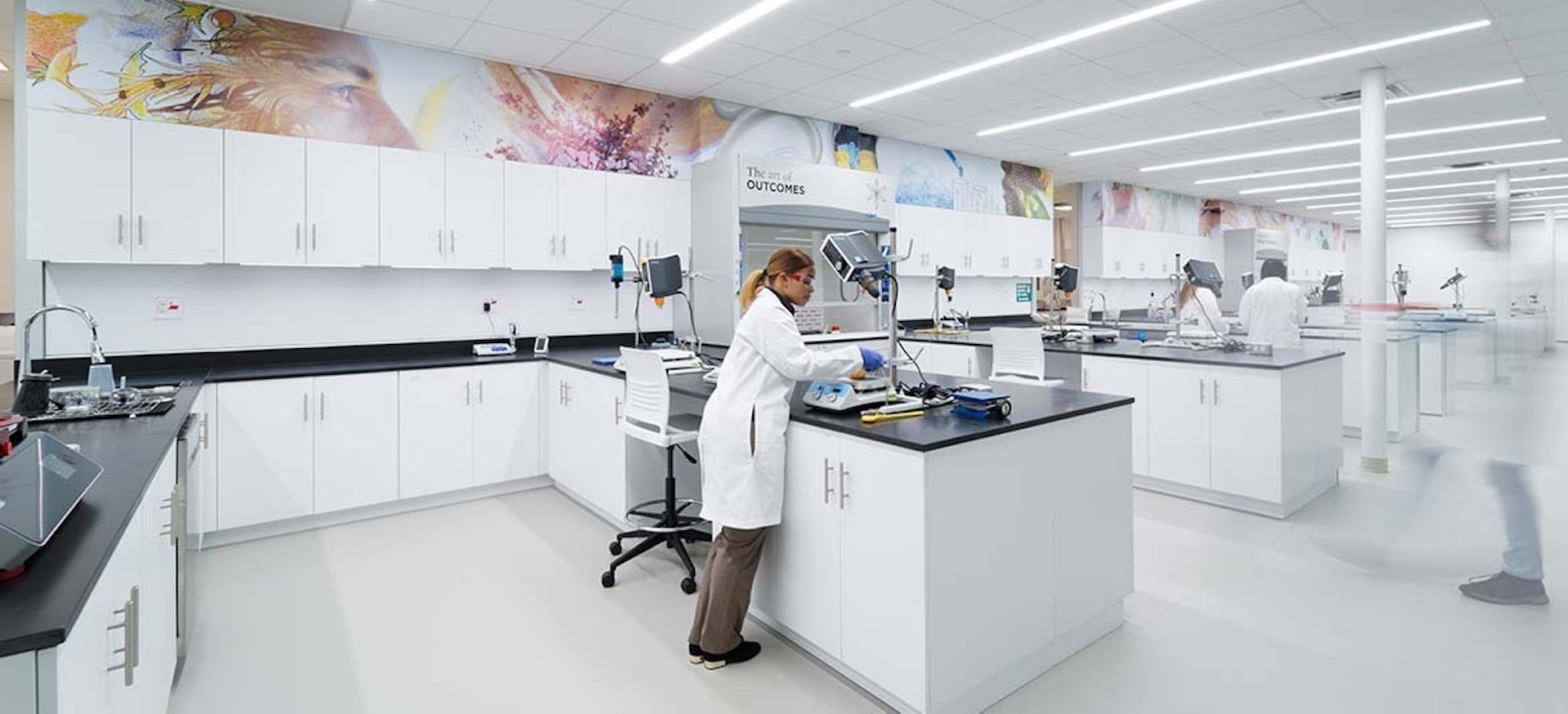LPA Director of Lab Planning Isabel Mandujano is featured in an article in DIRTT Environmental Solution’s web site focusing on move-in ready ‘spec labs’ that can be quickly adapted to different companies. Here’s an excerpt:
Historically, lab and research spaces were mostly clinical and designed to support the work being done, rather than the people who work in them.
This is changing, says Isabel Mandujano, Director of Laboratory Planning at LPA Inc., a sustainable design firm.
Now, fixed lab benches are becoming flexible and roll around on casters so a space can be adapted as new needs arise. Infrastructure — including electrical wiring and gas pipes — is housed in ceilings and walls with switches or valves that enable quick adjustment and reconnection in future, she says.
Meanwhile, adjacent office space is embracing human-centric innovation borrowed from other industries to encourage employee inspiration and collaboration…
In North America, private and public capital (to the record tune of $78 billion) flowed into life sciences-related companies in 2021, according to Cushman & Wakefield.
At the same time, demand for and the location of life sciences professionals is expanding geographically across the United States. JLL’s 2021 Life Sciences Lab Real Estate Outlook suggests that core clusters on the U.S. east and west coast, centered in saturated commercial real estate markets such as Boston, San Francisco, and San Diego will likely remain dominant. But emerging clusters in other locations, where talent is also concentrated, are on the rise.
“The last two years have seen an explosion of emerging markets [for life sciences workplaces] in cities that previously were not even part of the picture, including Chicago, Philadelphia, Atlanta, Oklahoma City, Dallas, Houston, and Austin, where companies are willing to relocate to be able to have more affordable space,” says Mandujano.
And these new markets are increasingly calling on flexible, adaptable, modular solutions to manage explosive growth — as well as attract and retain highly sought-after talent.
These days a life sciences start-up can go from bright idea to initial public offering in just a few years, says Mandujano…
As a result, there’s a growing need for commercial real estate that can easily be developed or converted to accommodate the industry’s complex and evolving needs.
“Modular design has been a tenet of laboratory planning for many years,” says Mandujano. “What is changing in the last few years is the opportunity to provide that move-in ready ‘spec lab’ that can be quickly adapted to different companies. Speed to market is really critical.”














